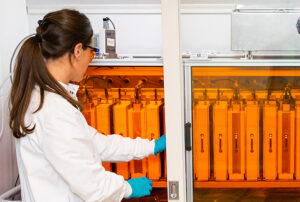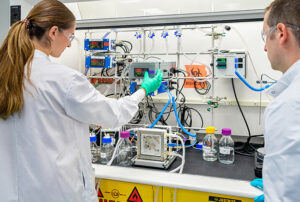Thermally Hazardous 1,3-Dioxolane Coupling Reaction Made Safer by Employing Process Safety Data
In our recent collaboration with Pfizer, we describe how we optimized a ruthenium-catalyzed catechol, terminal-alkyne coupling reaction to form a key benzodioxolane intermediate toward Lotiglipron. This transformation required the use of 3-butyn-2-ol, a valuable yet thermally hazardous reagent. Optimizing the manual reaction condition delivered a good yield, but it resulted in a poor process safety profile.
We gained further reaction understanding by performing a design of experiments (DoE) screening of relevant reaction conditions while using differential scanning calorimetry output data as well as productivity optimization parameters to strike a balance of process safety and chemical yield. To the best of our knowledge, this work represents the first report of using process safety data as DoE output to guide safe reaction condition selection. Finally, we demonstrate the optimal conditions in a lab-scale flow reactor with good translation of results from the batch reaction.
To learn more about the results of this program, please read the full article in Organic Process Research & Development.




